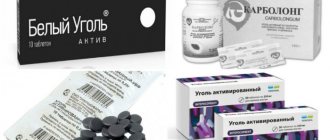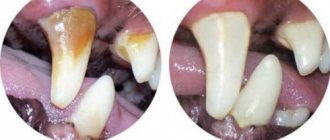In what places can the injection be given?
For both people and animals, injections are placed under the skin, into a vein, muscle, joint, or intra-abdominal space. Intravenous, intra-articular, intra-abdominal injections can only be done by a specialist (in extreme circumstances, you can see how this is done in a clinic, ask about the features of the technique and try it yourself under the supervision of a doctor). And any owner can master the technique of injecting medication intramuscularly and subcutaneously. The cat should be given an injection only in areas whose anatomical features make it possible to achieve the greatest therapeutic effect. For intramuscular injections: the back of the shoulder and thigh muscles, subcutaneous - the fold between the shoulder blades at the withers, the fold between the torso and the front of the thigh. Which method to choose and where to administer the medicine depends on the chosen drug.
How to give an injection to a cat?
If you learn on your own how to inject a cat subcutaneously and intramuscularly, you will be able to:
- not be tied to the schedule of the veterinary clinic;
- save personal time and money;
- save your pet’s nerves;
- improve his health and save his life in an unforeseen situation.
This skill will definitely come in handy. The main thing is to know how to give a cat an injection intramuscularly or under the skin correctly: adhere to sterile conditions and precise doses of the medicine, choose the right syringe and determine the injection site for the prescribed drug.
Injections to the cat are possible intramuscularly (they are given in the hip area) and under the skin (in the withers area).
How to choose the right syringe
The syringe is also selected depending on the drug - its volume and injection site. For injection into the muscle, instruments with a volume of 1-10 ml are suitable. If the amount of medicine is large enough, for smooth administration you should purchase a syringe with a piston equipped with a special seal. For a small volume of injection solution (up to 1 ml), an insulin syringe with convenient graduation is used.
It is advisable that the needle used to administer the drug intramuscularly is not too long. The femoral and brachial muscles of cats (especially kittens) are small, which increases the risk of damage to the sciatic nerve or bone. An insulin syringe equipped with a thin and short needle will also help out here. An injection into muscle tissue is more painful than under the skin, and a thin, sharp needle will slightly reduce pain.
Subcutaneous injections are tolerated more easily by animals - there are not too many nerve receptors in the withers. Needles can be longer and thicker, and syringes of different sizes, depending on the indications. Typically, the amount of medication injected into the subcutaneous space is greater than into the muscle.
When selecting an instrument for giving injections to a cat, take into account the consistency of the drug. Oil solutions are distinguished by viscosity, ductility and require larger diameter needles.
How to give an injection
An intramuscular injection is given into any muscle, but the optimal place is the thigh. There are three arguments at once: the lowest sensitivity, one of the largest muscles, good blood circulation, which means rapid absorption of the drug. Before the procedure, try to distract the cat, because if the pet is frightened, the force of muscle compression may bend the needle.
The skin on a cat's thighs is thin, but not too delicate. Compared to a subcutaneous injection, an intramuscular injection is easier. Lay your cat down, massage the muscle to improve circulation and you're basically done. The insulin syringe needle is inserted completely, normally, no deeper than 2.5 cm .
There is no need to disinfect the fur or skin before inserting the needle. While calming the cat, hold the syringe in your clenched hand to warm the drug . The cat's body temperature varies from 38 to 39 degrees and it is better that the drug is warm (unless the instructions or doctor's prescription say otherwise). After administering the medicine, the needle should be removed smoothly and not jerkily.
Advice: if the cat bites or squirms violently, ask someone for help or carry out the procedure in a place that is uncomfortable for the animal, for example, on a staircase.
Choosing a syringe for injection
Instruments for pets are purchased at a regular pharmacy for people. There are three types of injections: intramuscular, subcutaneous, intravenous. Each option requires different syringes and needles.
For intramuscular
In this case, the injection is carried out into the muscle of the cat's back or front leg. Syringe volumes are allowed: 1, 2, 5, 10 ml. If you need to administer a dose of more than 1 ml, you need to choose three-component syringes. In addition to the needle and piston, the design includes a plunger that allows the needle to move gently. The black seal is located at the end of the piston where the needle is inserted.
After choosing the correct volume, you should decide on the needle. For a cat and especially a kitten, it is better to choose thin needles. When choosing a syringe with a capacity of 2.5 ml or more, take a 30x0.6 mm needle or from an “insulin syringe”.
“Insulin syringes” work well with doses less than 1 ml. They got their name from the frequent administration of insulin to diabetic patients. The tool has two positive characteristics. First, it has a plunger for gentle movement. Secondly, the needle is short. Beginners should not worry about the depth of the needle.
Important! The needle must be very sharp. If she was getting medicine through the rubber stopper, the needle should be replaced.
For subcutaneous
In this case, the injection is made into the withers of the animal. Since the skin here is soft, not so stretched, it has few nerve endings. The cat feels less and, therefore, tolerates even painful injections well.
The volume of the syringe can be different, but the needle should be chosen 30x0.6 ml. This is the case if the medicine is not oil-based.
Often subcutaneous injections are accompanied by medications with an oily structure. To prevent the drug from clogging the passages in the needle, you need to choose needles of a larger diameter, since the oily and viscous structure of the drug hardens quickly. For example, if the syringe has a volume of 3 ml, then the needle should be selected 40x0.7 mm, etc.
Intravenous injection is carried out only by specialists.
Preparing for the injection
Before you give your cat an injection, you need to prepare everything you need.
- Determine the location where the procedure will be performed. It should be smooth, not slippery, preferably at the level of a regular table.
- Before taking the medicine, you should make sure that the drug is not expired. It will not be superfluous to re-read the instructions for the medicine, as well as the veterinarian’s prescription for time and dosage.
- The cold preparation must be warmed up to body temperature (it is enough to hold it in your hand for a while).
- To draw the medicine from the ampoule, its upper narrow part is broken, first wrapped with a piece of cotton wool.
- The powder form of the product must be diluted with saline, novocaine or a special solution included in the kit (check with your veterinarian for details on dosage). First, the solution is drawn into the syringe, then it is injected into a vial of powder, the medicine is dissolved with light circular movements (without shaking), and then drawn back into the syringe. After this, it is advisable to change the needle.
- When the medicine is drawn up, you should get rid of air bubbles - lift the syringe with the needle up, lightly tap the cylinder, ensuring that the bubbles accumulate under the medicine outlet, press slightly on the piston until the air comes out and drops of the drug appear.
Unneeded cotton wool, ampoules and other items should be disposed of, and the prepared syringe can be briefly placed on a clean surface (plate, container), covering the needle with a cap.
Possible difficulties
For a non-specialist, giving an intramuscular injection can be difficult, especially for the first time. It must be remembered that anxiety is transmitted to the pet, so it is very important to remain calm. The injection is necessary in order to help the animal, so there is absolutely no need to feel guilty.
If after an intramuscular injection blood appears on the surface of the skin or fur, this is considered normal. But if the bleeding does not stop, then you need to apply something cool to the manipulation site for 15-20 minutes. It is important not to overdo it and not to overcool the injection site.
Lameness may persist for some time from the injection of painful drugs, but if the limb hangs lifelessly and has lost mobility, this is a reason to seek advice from a specialist.
How to give an injection in the thigh
An intramuscular injection into a cat is given into the thickness of the femoral or brachial muscle. Before making an injection, it is necessary to palpate the muscle, determine the injection site, and make sure that the animal is calm and the muscle tissue is relaxed. For relaxation, you can pre-massage the limb.
The angle of insertion of the needle into the thigh should be approximately 90˚, the penetration depth should be no more than a centimeter. It is necessary to ensure that the needle does not completely enter the muscle - there should be a gap between the surface of the body and the plastic.
As soon as the needle is in the muscle tissue, you need to calmly press the plunger and slowly inject the medicine. You cannot move, turn, or deepen the syringe while giving an injection. Remove it in the opposite direction, with a quick movement.
How to give a cat an intramuscular injection
Injecting a cat in the thigh requires compliance with several rules:
- sterility of hands and syringes;
- exact injection dosage (not from the “I know better than a specialist” series);
- correct set of drug;
- mixing two medications in one syringe without a veterinarian’s prescription is unacceptable;
- insertion accuracy.
The syringe is removed from the package. If you have no experience injecting cats into muscles, then it is better to prepare 2-3 syringes: if one falls out of your hands, you can immediately take another without making the cat nervous.
Observing the accuracy of the dosage, take the medicine and, independently or with an assistant, fix the animal in any way. To prevent the cat from twitching when the needle is inserted, the animal is pressed with the elbow of the free hand.
For a cat weighing 4 kg, no more than 1-1.5 ml of medication is injected into the paw. The animal's skin does not need to be disinfected.
Before making an injection in the leg, find the right place. This is a muscle on the hind leg near the knee bend. It is important to hit the muscle and not the joint. The needle is inserted at an angle of 45°. The insertion depth should be 1-1.5 cm.
to give an intramuscular injection to a cat for the first time , but it is not difficult to do it correctly.
Where to give an injection to a cat
Despite the fact that, in theory, you can hit it almost anywhere, there are places on the animal’s body where it will be more effective and less painful. The cat can be injected subcutaneously into the withers (between the shoulder blades) or intramuscularly into the thigh. The muscle tissue of the thigh has a large number of vessels, so any injected medicine is very quickly delivered to the blood. An injection is given into the thigh if the drug is not very painful. In some cases, intramuscular administration is preferable, so you should carefully read the instructions. Intramuscular injections are limited in volume - liquid injected inside causes greater muscle separation, which is a microtrauma.
The skin on the withers is denser, so it is better to address “painful” solutions to this particular place - just remember how animals fight and grab each other precisely by it.
Rate of administration and dose
The speed at which the medicine is administered is essential. It is different for different types of injections, and the permissible dosage also differs significantly.
Into the thickness of muscle tissue:
- Speed is slow. The larger the volume, the slower you need to inject. It is generally accepted that it takes 2-3 seconds to inject 1 ml of solution.
- Amount of medication – for an average-sized cat, no more than 1 ml or a maximum of 1.5 ml of solution should be injected into the thigh.
Under the skin:
- Speed doesn't matter.
- The volume of medication is calculated based on the pet’s weight, but not more than 60-90 ml for each kilogram of body weight. If you need to inject a larger volume, then make subcutaneous injections in different places.
How to give a subcutaneous injection
It is easier to inject a cat under the skin than in the thigh. Firstly, the withers are considered less sensitive to mechanical influences (it’s not for nothing that cats drag their cubs by the withers), so this place is ideal for administering painful solutions. Secondly, much larger volumes of medicinal solutions (up to 70-90 ml) can be injected subcutaneously than into the femoral part. Thirdly, there is no risk of the needle getting into a bone, joint or nerve, as happens with intramuscular injection. The only point that needs to be paid special attention to is that the skin here is thicker than the thigh, so you need to apply force to pierce it.
The injection technique under the skin is as follows:
- With one hand, the skin in the withers area needs to be gathered into a fold;
- with the other hand, under the skin pulled upward closer to the body, with some effort, insert the needle at an angle of 45˚ relative to the surface of the body;
- administer a medicinal product;
- remove the syringe;
- release the skin.
It is advisable that someone from the side during the procedure slightly press down the head and back of the pet’s spine.
Important! If you have no experience in administering medication subcutaneously to your cat, there is a risk of piercing the skin through. This probability is due precisely to the thickness of the skin and its resistance during piercing with a needle. Therefore, during the injection process, you need to pay attention to the opposite side of the fold - if droplets appear on it, you need to pull the needle a little towards yourself, and then continue the procedure.
How to give an injection at the withers
Before the injection, caress and stroke the animal. Speak calmly and friendly. Hold the cat with the forearm of your right hand, pressing it lightly. If you are injecting with an assistant, then have him press the shoulders with the head with one hand, and the backside with the other, to the surface on which the animal is lying. Take the syringe with the prepared medicine with your right hand, and form a skin fold with your left. To do this, pull the skin with your left hand.
Pierce the skin with a confident movement, aiming the needle under the base of the fold and parallel to the body. The needle is inserted 1 - 2 cm long, not perpendicular to the fold, but at an angle. The skin in the withers area is quite dense and to pierce it you need to apply some force. After the puncture, administer the medicine; the speed of administration for subcutaneous injections does not matter.
Be careful not to puncture the fold of skin all the way through, otherwise the medicine will leak out from the opposite side and you will have to repeat the injection.
Without releasing the fold, remove the needle and syringe. The injection site can be lightly massaged so that the medicine spreads evenly under the skin and does not flow out through the injection hole.
In one subcutaneous injection, significant volumes of drug solutions can be administered - from 30 to 60 ml, depending on live weight.
Administration technique
The speed of drug administration plays a role with intramuscular injection. The more medicine, the slower it must be administered. For example, a volume of 1 ml should be stretched over 2-3 seconds, and 0.5 ml should be injected in one second.
Injections separate the muscles and thereby cause microtrauma to the body. Therefore, a certain calculation is used to administer the required amount of medicine for cats of different weights. For an average cat weighing 4 kg, one place should contain 1 ml of the drug. If you need to inject a larger amount, then you need to inject in several places.
With a subcutaneous injection, the speed of drug administration is not significant. The amount of liquid per 1 kg is limited to 70 ml.
Intramuscular injection
In order for the medicine to work quickly, an intramuscular injection is usually given. The best place for injection is considered to be the middle of the thigh.
Algorithm of actions
Preparation:
- The procedure will be quick and successful if you carry out the preparatory work. We put cotton wool, a syringe, medicine, a file, and alcohol on the table in advance.
- Read the instructions carefully. Let's say you notice a discrepancy with your veterinarian's prescription. Call your doctor and find out before you get the injection.
- Wash your hands with soap and wipe with alcohol.
- Before filing the ampoule, make sure the medicine is at the bottom. If the medicine gets into the narrow part of the bottle, tap the sides with your finger and distribute it correctly.
- Point the needle into the cut neck and turn the ampoule over. This will make it more convenient to collect liquid.
- Once the solution is drawn into the syringe, turn the syringe upside down with the needle so that the air droplets rise up. Press the plunger until the needle is filled with medicine and the air is expelled.
- Don't worry before the procedure, otherwise your cat will sense it and become agitated and tense. You need to calm the cat with caressing movements to relax the muscles.
- There is no need to lubricate the injection site with anything, as this can only damage the antibacterial layer of the skin.
Injection:
- If you have a partner, let him put the cat on its side and hold it by the paws. For independent actions, you can use a bag with a fixative for injections. Also use a large clothespin. Fasten it behind the withers. The cat will think that someone is holding it and will sit quietly. The owner has the opportunity to work with both hands.
- Use your fingers to feel the bone in advance so as not to hit it with a needle.
- There is no need to pinch the injection site in the muscle.
- Some medications should not enter the blood vessels. Therefore, during the injection, pull back the plunger and make sure that no blood enters the syringe and calmly inject the solution. If there is blood, remove the needle and make a new puncture.
- Insert the needle into the middle of the thigh 10 mm at an angle of 45 degrees.
- The rate of administration depends on the amount of solution. Each ml of medicine must be administered for at least 2-3 seconds, each subsequent ml is administered more slowly.
- After injecting the liquid, pull out the needle at the same angle that was inserted before. There is no need to wipe the injection site.
How to give an intramuscular injection
It is much more difficult to give an intramuscular injection to a cat. It is more painful than subcutaneous, it is better to do it together. Cats are not injected with intramuscular vitamins due to pain and solutions for infusion through a vein. If a course is prescribed, then you need to change the injection site and legs.
Execution tactics:
- Place the pet on a flat surface (table, floor). Securely fix, especially the part where the injection will be made. It is better to inject the medicine into the hind leg (the area of the femoris major muscle).
- Disinfect the injection site (for hairless cat breeds).
- It is better to approach your pet from the side rather than from behind. This way there is less risk of damaging the sciatic nerve.
- With your left hand, grab your back leg so that its inner side lies on your palm. It is advisable to massage the muscles so that they relax.
- The depth of administration depends on the location and fatness of the pet. Approximately 2/3 of the needle. You can’t insert it deeper; there is a risk of hitting the femur or hip joint. When working with an insulin syringe, the needle is inserted almost all the way. The insertion angle is 90 degrees.
- After immersing the needle, check whether blood has entered the syringe. The contents are colored, which means the needle has entered the vessel. If this cannot be allowed according to the instructions, it is necessary to change the depth of insertion.
- It must be administered slowly, but not for long.
- Only after making sure that the medicine has run out, quickly remove the needle.
- It is possible, but not necessary, to massage the injection site with light movements. This will speed up the distribution of the substance and reduce the pain slightly.
After the manipulations, the pet should be praised for showing perseverance and endurance. Give him a treat and pet him. And continue to act as if nothing happened. This way, it is possible to avoid revenge, which is believed to be more prone to cats than cats.
What complications may there be?
The introduction of medicinal solutions, regardless of the location, injures the surrounding tissues. Complications can arise not only when the procedure is carried out ineptly, but also from an experienced specialist. The most common negative consequences of injections are:
- hematomas – formed due to damage to a blood vessel by a needle and penetration of blood into neighboring tissues; they do not require special treatment and go away on their own;
- blood protruding after removing the needle - just as in the previous case, serves as a sign of damage to the blood vessel; to stop the bleeding, it is enough to apply cold to the wound;
- bump, compaction, swelling at the injection site - can have several reasons, for example: too rapid administration of the medicine, infection entering the wound, individual tissue reaction, and others; if the bump does not go away for a long time, and the cat’s well-being worsens, you need to show your pet to a specialist;
- lameness - can be a consequence of the injection itself, as damage to soft tissues, for example, with severe pain from the solution, or as a result of the needle getting into the sciatic nerve; in the latter case (if the damage persists for longer than 2-3 days and the paw remains motionless), you need to visit a veterinarian;
- deviations in behavior are a normal reaction of an animal that goes away on its own over time; the cat may panic, avoid touching, flinch, and so on;
- an increase in body temperature - more often occurs as a reaction to the injected solution, a manifestation of an allergy, and also if sterility was not maintained during the procedure and an infection got into the wound.
Additional symptoms that you need to pay attention to and consult a doctor: pus from the skin puncture site, painful lumps, refusal to eat, loss of activity, apathy for more than 3 days after the injection.
Possible consequences
Sometimes the procedure does not go without consequences. Therefore, you need to be prepared for them in order to make the cat’s fate easier. Let's look at the most common ones.
Blood at the injection site
Sometimes after an injection you notice a drop of blood. A blood vessel may be damaged. If there is little blood, then you need to take ice, wrap it in a towel and apply it to the wound. After 10-20 minutes everything will pass. If the wound bleeds after applying cold, contact your veterinarian immediately.
Formation of lumps and swellings
Post-injection abscesses are the result of an unsuccessful injection. A bacterial infection enters the wound. The second reason is hypothermia of the pet in the injection area. Consequences: increased temperature, fever, restlessness. The cat develops painful, purulent capsules that are removed by surgery.
Usually, swelling and bumps after injections do not affect the pet’s health. Over time, they will resolve on their own without the intervention of a veterinarian.
Lameness
Lameness of the hind limb often appears after injections. According to veterinarians, there is no need to worry about this. The lameness will go away in a few days.
But if a cat drags its leg for several weeks, you need to contact professional veterinarians to prevent the disease at an early stage. Doctors will carry out a series of novocaine blockades.
Changing your cat's behavior
The pet changes a lot after the injections: nervous, does not allow itself to be petted. Experts explain this as a psychological attack. Cats are afraid of people in white coats and injections. To bring it to its original state, you need to give your pet time. Over time, he will forget everything and will be active and affectionate as before. You can speed up the process with your favorite food; pamper your cat with goodies, and she will respond to your care immediately.
Temperature increase
When the temperature has increased as a result of vaccination, the reaction is considered normal. After 2-3 days all symptoms will disappear. If the temperature continues to persist after 3 days, you should contact your veterinarian. Complications associated with allergies and paralysis may appear here. Based on the identified complications, treatment is prescribed.
A rarer case of fever is associated with an abscess after injections. You should contact your veterinarian to remove the purulent lump.
It is more economical to treat pets at home. But before you make a choice, you should think about whether you are ready to be fully responsible for your actions. Sometimes the right decision may be to trust the professionals. Share with us and readers in the comments practical tips on how you inject your cat.
When a veterinarian prescribes a course of injections for pets, not all owners have the opportunity to bring the animal to the clinic. Also, not every owner has a neighbor or acquaintance (relative) with experience in giving injections. In addition, there are times when a pet urgently needs an injection, but there is no way to contact anyone (at the dacha or on a trip). Therefore, every owner needs to have an idea of how to give an injection to a cat.
Useful tips
To inject your cat yourself and avoid complications, you need to adhere to the following recommendations:
- for injections, you should use only a sterile syringe, which must be disposed of after the procedure;
- the needle must not be touched with hands, otherwise it must be replaced;
- Before carrying out the procedure, it is better to fix the pet in a motionless state, leaving only the injection site of the syringe open (you can use a harness, blanket, sheet and other accessories) or invite someone from the side to hold the cat;
- as a rule, injections are made into an intact area of the skin, so if the animal has any skin disease, you must first clarify this issue with a veterinarian;
- there is no need to disinfect the injection site of the syringe, but the owner must first wash his hands with soap and treat them with an antiseptic;
- if the doctor has prescribed injections every day or several a day, it is best to give injections to the paw alternately - right and left or front and back, in order to avoid severe trauma to the cat’s tissues and allow them to heal;
- oil-based medicine should not be allowed to enter the bloodstream; You can make sure that the needle has not entered a blood vessel by slightly pulling the plunger towards you after inserting the syringe - the absence of blood in the solution indicates that the vessels are not affected, and you can continue the procedure;
- You cannot administer more than one drug at the same time in one syringe, unless authorized by a specialist.
To support a mustachioed pet during the procedure, as well as before and after it, you need to talk to it as gently as possible, stroke it, and calm it down. At the end of the manipulations, you should give the cat something tasty.
Every owner can give a cat an injection on their own, the main thing is desire. It’s good if the skill isn’t useful, but mastering it won’t hurt at all.
Where to give an injection to a cat
The places for injections in a cat are strictly determined by the anatomy of the animal. They are determined according to the prescription of a specialist and depend on the drug prescribed. Main injection sites:
- for subcutaneous injections: withers;
- femoral fold;
- front of thigh;
Subcutaneous injections are performed in those parts of the body where it is possible to gather the cat’s skin into a large fold
- back of the thigh;
The cat has well-developed muscles on the back of the thigh and shoulder, so intramuscular injections are given here
Rules for manipulation
Although any owner can learn how to give injections to their pet, it is still a difficult task that requires not only certain skills, but also knowledge:
- It is better to give the injection to a cat with a partner. Even the calmest animal can behave unpredictably. If there are no assistants, then the cat must be securely secured; a harness or a bathing net will help. In the absence of these devices, you can use a simple technique: the cat is tightly swaddled in a blanket, large towel or sheet. This will save both the cat and the owner from possible injuries. Only the injection sites remain free: the thigh or withers.
A cat bathing net will help secure your pet during injections.
- The injection is given only with a sterile disposable syringe. Touching the needle with your hands is strictly prohibited. If the needle has been damaged, it must be replaced. The injection site does not need to be disinfected; the cat has everything provided by nature: its skin is covered with a fatty film, which has powerful antibacterial properties. But a person’s hands must be treated with an antiseptic.
- Medicine from the refrigerator must be warmed to body temperature. It's about 37 degrees.
- The skin at the injection site should be healthy and without damage.
- It is better to entrust the introduction of oil preparations to a specialist. But if this is not possible, then after inserting the needle you need to make sure that it does not fall into the vessel. To do this, after the puncture, you need to slightly pull the syringe plunger back. If no blood appears in the syringe, then the medicine can be administered. If the oil preparation gets into the bloodstream, it is deadly for your pet.
- You cannot mix drugs in one syringe unless prescribed by a doctor.
- Intramuscular injections are best done alternately in different paws. This will relieve unnecessary pain and allow time for healing from the previous injection. Actually, the same sequencing technique is used in humans.
- After the injection, be sure to give a treat.
Where to give a cat an injection for cats
Well, you don’t want a kitten at all, and it’s not easy to survive the cat’s heat period? In this case, the issue is resolved by sterilizing the animal. But for some reason, some owners believe that there is nothing easier than suppressing the reproductive instinct, forgetting that the consequences of such a decision can be very dire.
If you definitely want to experiment with your cat and give her a cat injection, then you will still have to visit the veterinarian - this should be the moment before the start of estrus, and not during it. The doctor will administer the medicine himself, and then, after 3 months, the next injection will be given according to the schedule. The third ampoule is administered after 4 months, and all subsequent ones every 5 months.
Why shouldn't you give injections yourself ? This is a big risk even without an inexperienced person, so the entire process must be supervised by a doctor.











